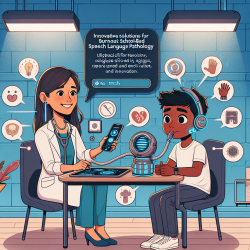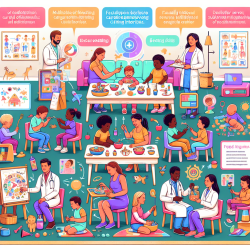Introduction
Adolescent healthcare in low-income countries often faces significant challenges, particularly in regions like Burkina Faso, where poverty is pervasive. A recent study titled Challenges and achievements in the utilization of the health system among adolescents in a region of Burkina Faso particularly affected by poverty sheds light on these issues. This blog explores the study's findings and suggests ways practitioners can enhance their skills to improve healthcare outcomes for adolescents.
Key Findings from the Study
The study involved 1,644 adolescents aged 12-20 in rural Burkina Faso. It revealed that 43.7% of participants perceived a need for healthcare in the preceding year, with a higher percentage among females (52%) compared to males (35.6%). Despite the perceived need, 92.6% accessed care, and 79% successfully utilized healthcare services.
Key predictors of healthcare need included gender, education, and urbanicity, while successful utilization was influenced by household wealth and the educational attainment of female guardians.
Implications for Practitioners
Practitioners can leverage these findings to improve healthcare access and outcomes for adolescents. Here are some strategies:
- Focus on Education: Enhance educational programs targeting adolescents, particularly females, to increase awareness of healthcare needs and services.
- Address Socioeconomic Barriers: Implement community-based interventions that reduce financial barriers to healthcare access, such as subsidized services or health insurance schemes.
- Enhance Urban-Rural Healthcare Connectivity: Develop telehealth services, like those offered by TinyEYE, to bridge the gap between urban and rural healthcare access.
- Empower Female Guardians: Educate and empower female guardians, as their educational attainment significantly impacts adolescents' healthcare utilization.
Encouraging Further Research
While the study provides valuable insights, further research is necessary to explore the underlying causes of healthcare disparities among adolescents in Burkina Faso. Practitioners are encouraged to engage in or support research that examines:
- The role of cultural and social factors in healthcare utilization.
- The impact of telehealth solutions on improving healthcare access in rural areas.
- Longitudinal studies that track healthcare needs and utilization over time.
Conclusion
Improving healthcare access for adolescents in low-income regions requires a multifaceted approach that addresses educational, socioeconomic, and geographical barriers. By implementing data-driven strategies and encouraging further research, practitioners can significantly enhance healthcare outcomes for this vulnerable population.
To read the original research paper, please follow this link: Challenges and achievements in the utilization of the health system among adolescents in a region of Burkina Faso particularly affected by poverty.










